Knowing the traits of any stainless steel is imperative when choosing the best option for a specific application, especially in engineering fields where material resistance and reliability are critical. Among the many types of stainless steels, the 416 stainless steel possesses particularly striking attributes due to its magnetic properties. But what accounts for the magnetism of this alloy? How does it measure up to other stainless steels, and where is it most suitable? This article explores the striking attributes of 416 stainless steel, exploring its structure, magnetic properties, and wide uses. If you are wondering how 416 stainless steel can help meet your industrial needs, keep reading to understand its intriguing attributes.
What are the Properties of 416 Stainless Steel?
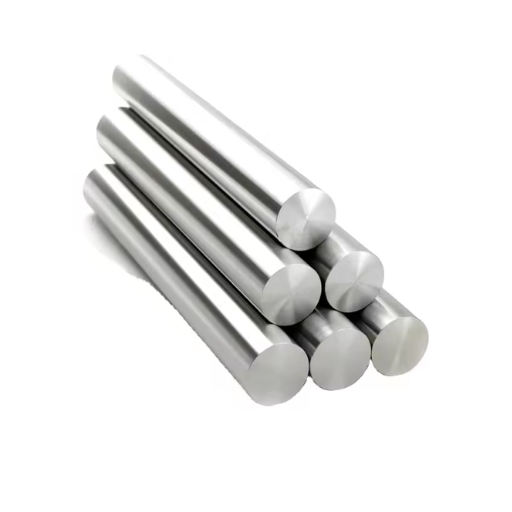
- High Machinability: 416 stainless steel is the most machinable stainless steel, best suited for applications where efficiency and accuracy are paramount.
- Conditioned to withstand mild corrosive elements, 416 stainless steel has moderate corrosion resistance, making it useful in applications where corrosion resistance is necessary.
- Because of its ferritic structure, 416 stainless steel is magnetic even in an annealed state, which sets it apart from other grades of stainless steel.
- Used to fabricate shafts and gears, 416 stainless steel can be heat-treated to improve hardness and resistance to wear, allowing it to withstand harsh operating conditions.
- Chromium (12-14%) is added to the composition of this alloy for further resistance against corrosion. At the same time, sulfur is present to enhance machinability, albeit at the cost of some toughness due to reduced strength.
Due to these unique characteristics, 416 stainless steel is favored among manufacturers in the automotive and aerospace industries.
Understanding the Magnetic Nature of 416 Stainless Steel
Stainless steel 416’s magnetic nature is due to its martensitic microstructure, which results from its iron-based crystalline structure and the controlled addition of alloying elements. Unlike austenitic stainless steels, predominantly non-magnetic, martensitic stainless steels such as 416 are ferromagnetic because of the body-centered cubic (BCC) lattice.
The magnetic properties of 416 stainless steel are due to its specific chemical structure, as it contains chromium as a 12-14% alloying element. However, the steel’s carbon content and the heat treatment processes intended to improve hardness further ensure a strong magnetic response, as the steel retains its magnetic response even after manufacturing processes.
From a magnetic applications perspective, 416’s magnetism is advantageous for switches, solenoids, and relays. Research shows that the relative magnetic permeability (µr) of 416 stainless steel generally lies between 500 to 1,000, depending on a combination of heat treatment and machining factors. Such values demonstrate significant magnetic attraction when subjected to magnetic fields relative to non-magnetic stainless steels.
It should be mentioned that machining and heat treatment do not significantly impact magnetic responses, but do so in terms of the microstructure. For example, specific annealing steps may lower magnetic permeability, while more magnetically saturated states are typical of higher hardness. This means that particular states of materials should be regarded in practical applications, as the materials can be very different in nature.
In conclusion, the versatile strength of magnetism attributed to 416 stainless steel, its machinability, and resistance to corrosion prove that it is ideal for parts requiring magnetic properties and mechanical strength.
Exploring the Corrosion Resistance of 416 Stainless Steel
| Key Point | Details |
|---|---|
| Material Type | Martensitic, free-machining stainless steel |
| Chromium Content | 12-14% |
| Corrosion Resistance | Good in fresh water, dry air, and mild acids |
| Limitations | Poor in chloride/marine environments |
| Best Condition for Resistance | Hardened with a smooth surface finish |
| Heat Resistance | Up to 760°C intermittent, 675°C continuous |
| Weldability | Poor pre-heating and specific electrodes required |
| Machinability | Highest among stainless steels, 85% of free-machining carbon steel |
| Applications | Valves, gears, bolts, pump shafts, washing machine parts |
| Notable Weakness | Susceptible to rust in saltwater or corrosive chemicals |
Comparing 416 with Other Grades, Like 304 and 316
| Parameter | 416 Stainless Steel | 304 Stainless Steel | 316 Stainless Steel |
|---|---|---|---|
| Corrosion Resistance | Moderate, unsuitable for marine environments | High, suitable for general corrosive environments | Excellent, ideal for marine and harsh environments |
| Machinability | Excellent, due to the added sulfur | Moderate, less machinable than 416 | Challenging, requires special techniques |
| Strength | Moderate, 510-800 MPa tensile strength | Moderate, 515 MPa tensile strength | High, 520-1180 MPa tensile strength |
| Hardness | 230-320 HB | 201 HB | 160-360 HB |
| Weldability | Poor, due to sulfur content | Excellent, widely used in welding applications | Excellent, suitable for critical welds |
| Applications | Gears, bolts, shafts, and machined parts | Construction, facades, roofing, cladding | Marine, food processing, chemical industries |
| Cost | Lower, cost-effective | Moderate | Higher, premium grade |
How Does Processing Affect 416 Stainless Steel?
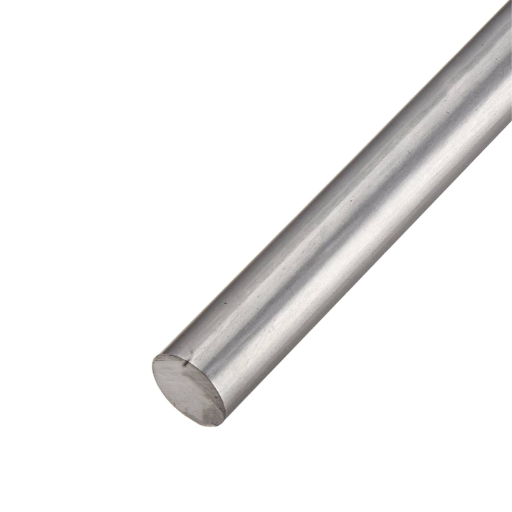
The processing steps taken impact the integral parts of 416 stainless steel. Heat treatment improves its hardness and strength, which are essential for demanding uses. However, too much heat can weaken its corrosion resistance, so trimming and controlled processes are needed. The sulfur content also makes machining 416 easy, though this does come at the cost of ductility. An optimum strength, corrosion resistance, and machinability combination needs careful maintenance and finishing.
The Role of Machinability in 416 Stainless Steel
Being easily machinable makes stainless steel 416 valuable, attracting industries requiring high precision and swift work—the following lists five notable details and figures that outline its machinability.
- High Machining Rate
The machining speed for 416 stainless steel is higher than most of its stainless steel counterparts, resulting in time conservation and efficiency throughout the production process.
- Sulfur Content for Better Machinability
The addition of sulfur in 416 improves chip breaking and diminishes tool wear, making the machining smoother.
- Surface Finish Standard
Improved machinability allows 416 stainless steel to provide parts with precise surface finishes, which is vital for components with visual desirability.
- Use of Standard Equipment
Manufacturers can save money since no special equipment is needed for basic cutting tools on 416 stainless steel.
- Decrease in Operational Expenses
Not needing to replace tools as often for 416 stainless steel, and the self-sustaining nature of its machinability lowers production costs.
In addition to these benefits, 416 stainless steel is easy to get as a material, which makes it even more preferred for applications with tight budget requirements.
Heat Treatment and Hardness in 416
| Parameter | Details |
|---|---|
| Annealing Temp | 815-900°C, air cooling follows |
| Hardening Temp | 925-1010°C, quench in oil |
| Quenching Effect | Locks properties, strengthens material |
| Tempering Temp | 400-750°C, depending on desired hardness |
| Avoided Range | 400-580°C, poor ductility in this range |
| Typical Hardness | 230-320 HB after treatment |
| Softening Effect | Annealing optimizes machinability and reduces hardness |
Impact of Annealing on 416
Annealing is a vital heat treatment step for 416 stainless steel. It alters the steel’s fine structure and mechanical properties to optimize its machinability and performance. The material is held at about 1500 – 1650°F or 815 – 900°C for some time, then cooled down slowly. Such a procedure helps relax internal stresses, refine grain structures, and increase ductility, essential for machining and forming processes.
Typically, Charmilles 416 stainless steel in the annealed condition achieves a hardness of about 200 HB Brinell Hardness. The softer condition is easier to machine and more accurate; compared to its hardened state, the machining is more straightforward and more precise. According to research and industry feedback, well-annealed Charmilles 416 stainless steel leads to better surface finish and tool life while machining, which lowers direct upkeep. Besides, it is also easier for components to be relied upon for sustained loading by requiring hardening afterwards, because uniform hardness distribution is assured throughout quenching and tempering processes after annealing.
Recent studies have revealed that annealing increases the ease with which residual magnetism can be held by 416 stainless steel. This is crucial in parts used in electric mechanisms. Steel treated this way increases reliability and predictability, making it usable in many industries, such as automotive, aerospace, and the manufacturing of precise instruments.
What are the Applications of 416 Stainless Steel?
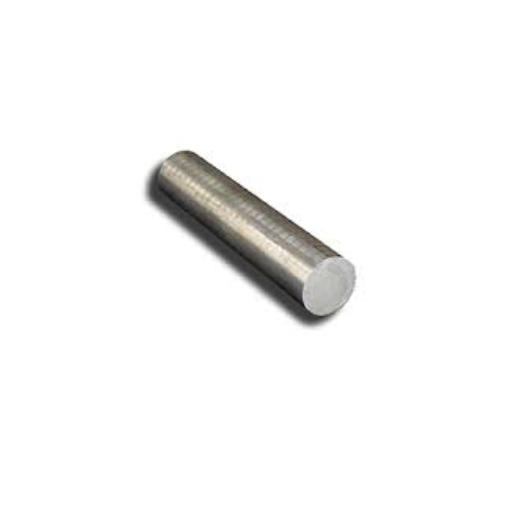
416 grade stainless steel has a variety of applications that require moderate corrosion resistance and can be easily machined. Some common uses are:
- Automotive Components: For motor shafts and valves.
- Aerospace Parts: For fasteners and fittings.
- Manufacturing Tools: For precision gears and screws.
- Household Equipment: For kitchen utensils and cutlery.
416 stainless steel is used because of its exceptional durability, precise performance standards, and high machinability.
Utilizing 416 in Pump and Shaft Applications
The exceptional characteristics of 416 stainless steel make it well-suited for use in pumps and shafts. 416 is very easy to work with, has moderate corrosion resistance, and retains high strength. It can also make gears, bolts, and motor shafts.
The Suitability of 416 for Cutlery and Round Bar
Due to its superb machinability and strength, 416 stainless steel also performs well in manufacturing cutlery and round bars, ensuring precision and durability.
Why Choose 416 for Machinist and Practical Machinist Needs?
In my case, choosing 416 stainless steel for machinist and practical machinist tasks is straightforward because its remarkable machinability saves time and minimizes tool wear. The corrosion resistance and strength also ensure consistency and dependability, championing it as a choice for precision machining.
Comparing 416 with Other Stainless Steel Grades
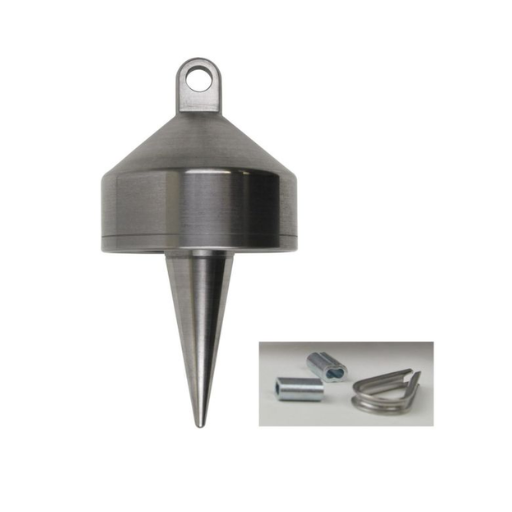
Compared to other grades, the machining capabilities of 416 stainless steel is its primary advantage. Unlike 304 or 316, which are more challenging to machine due to their austenitic structure, 416 is processed much more efficiently. This allows for savings in both time and effort. However, it is essential to note that 304 and 316 outperform 416 in corrosion resistance, especially considering chloride-rich environments. Lastly, for the applications needing high strength, moderate corrosion resistance, and ease of machining, 416 is ideal. 304 or 316 would be preferred options for extreme corrosion resistance or non-magnetic requirements.
Differences between 416 and 410 in Mechanical Properties
| Property | 410 Stainless Steel | 416 Stainless Steel |
|---|---|---|
| Tensile Strength | 520-770 MPa | 510-800 MPa |
| Yield Strength | 290-580 MPa | 290-600 MPa |
| Brinell Hardness | 190-240 | 230-320 |
| Machinability | Lower, challenging machining | Excellent, enhanced by sulfur addition |
| Ductility | Moderate, elongation 16-22% | Lower, elongation 13-31% |
| Wear Resistance | High, suitable for stress applications | Good, less than 410 |
| Corrosion Resistance | Better resistance to chlorides | Reduced due to sulfur content |
How 416 Stands Against 420 and 440C in Corrosion Resistance
| Parameter | 416 Stainless Steel | 420 Stainless Steel | 440C Stainless Steel |
|---|---|---|---|
| Atmospheric Conditions | Moderate, better when polished | Good, but requires complete hardening | Superior, due to higher chromium |
| Marine Environments | Poor, unsuitable for salt exposure | Limited, not ideal for marine use | Better, but still not recommended |
| Chemical Exposure | Suitable for mild chemicals | Handles acids better when hardened | Excellent, resists mild acids |
| Chloride Resistance | Prone to pitting in chlorides | Low resistance in salty conditions | Resists pitting in mild chloride areas |
| Ideal Use Conditions | Dry or mildly corrosive environments | Tools requiring corrosion protection | High-stress, corrosive environments |
Why 416 is Preferred over Austenitic and Ferritic Stainless Steels
| Parameter | 416 Stainless Steel | Austenitic Stainless Steels | Ferritic Stainless Steels |
|---|---|---|---|
| Machinability | Best, due to sulfur content | Poor, harder to machine | Moderate, better than austenitic |
| Strength | High, can be heat-treated | Moderate, lower than martensitic | Lower, not heat-treatable |
| Corrosion Resistance | Moderate, better in mild environments | High, ideal for harsh conditions | Moderate, reduced in chloride settings |
| Weldability | Poor, prone to cracking | Excellent, preferred for welding | Limited, with risk of brittleness |
| Cost | Affordable, cost-effective for machining | Higher, due to nickel content | Low, economical, but limited capabilities |
| Applications | Screws, gears, valves, and shafts | Marine, chemical, and food industries | Automotive trim, appliances, and exhausts |
Is 416 Stainless Steel Suitable for Marine and High-Temperature Applications?
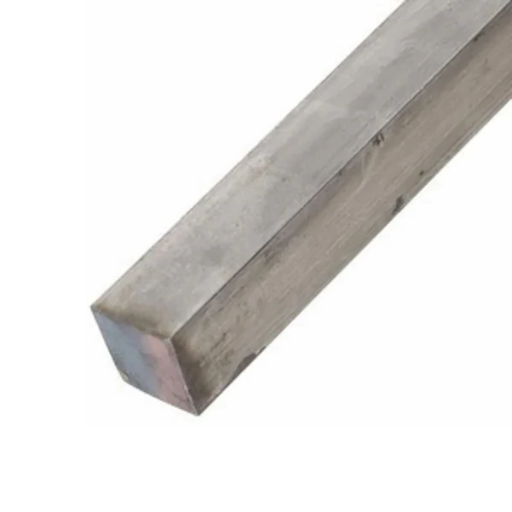
Because of the reduced corrosion resistance, 416 stainless steel is generally unsuitable for marine environments, particularly with chlorides. It is more prone to pitting and crevice corrosion due to the high sulfur content. Reinforcing the machinability. While 416 stainless steel can withstand moderate temperatures, it is nothing to boast about. Coupled with other grades of stainless steel designed for such environments, 416 will lose its strength and oxidation resistance over time, making it less ideal for high temperatures. Instead, 316 or 310 is typically the more appropriate for marine or high-temperature use.
The Corrosion-Resistant Properties of 416 in Marine Environments
Although 416 stainless steel is slightly more corrosion resistant than other grades, it is not as suitable for the marine environment. Five points explain why this alloy has such stainless steel grade marine corrosion resistance.
- Moderate Corrosion Resistance
416 stainless steel is moderately resistant to corrosion in low-humidity areas and places that do not have a lot of chloride exposure. In the case of a saline or marine environment, however, the alloy’s performance is considerably effective.
- Pitting and Crevice Corrosion Susceptibility
The alloy is highly susceptible to pitting and crevice corrosion in a chloride environment, such as seawater or salt air. Eventually, this will result in localized structural damage.
- Limitations Due To High Sulfur Content
The addition of sulfur to improve the machinability of 416 stainless steel makes it hypersensitive to corrosive attacks. This hypersensitivity is due to the sulfur content creating small inclusions that act as steps towards corrosion in a harsh situational environment.
- Absence of Molybdenum
Compared with other stainless steel grades, such as 316, which has molybdenum that enhances resistance to chloride, 416 lacks such elements. This greatly lowers the ability of stainless steel to have marine-grade exposure.
- Performance in Marine Atmospheric Conditions
Some corrosion might be resisted in some portions of outdoor marine atmospheres with a bit of sunlight. However, lasting or direct exposure to seawater is highly corrosive, restricting matter’s usefulness over time in these settings.
For marine setting works, it is usually suggested to consider alloys with greater alloying elements and greater corrosion resistance, such as 316 or 2205 duplex stainless steel.
Performance of 416 at High Temperatures
| Parameter | 416 Stainless Steel |
|---|---|
| Scaling Resistance | Up to 760°C intermittent, 675°C continuous |
| Strength Retention | Reduced above the tempering temperature |
| Recommended Limits | Not recommended beyond 675°C |
| High-Temperature Use | Low stress, moderate temperature |
| Applications | Components like pump shafts, low-stress machine parts |
References
- Penn Stainless – States that 416 stainless steel is always magnetic due to its martensitic structure.
- SteelPro Group – Confirms that 416 stainless steel is magnetic and highlights its martensitic properties.
- Impact Ireland Metals – Notes that 416 stainless steel is magnetic in all conditions and widely used in various applications.
Frequently Asked Questions (FAQ)
Q: What is 416 stainless steel, and is it magnetic?
A: 416 stainless steel is a martensitic grade known for being magnetic. It is often used in general engineering applications due to its strength and free-machining capabilities.
Q: How does the composition of 416 stainless steel affect its magnetic properties?
A: The magnetic properties of 416 stainless steel are primarily due to its martensitic structure, which is achieved through carbon and chromium in its alloy. This structure allows it to be magnetic, unlike some other stainless grades.
Q: What are the key properties of 416 stainless steel?
A: Key properties of 416 stainless steel include its high yield strength, good machinability due to high sulfur content, and moderate corrosion resistance. It can be hardened and tempered to enhance its mechanical properties.
Q: In what applications is 416 stainless steel commonly used?
A: 416 stainless steel is often used in applications requiring precision machining, such as in making screws, rods, and machine parts. Its free-machining nature makes it suitable for components that require complex shapes and high surface finishes.
Q: How does 416 stainless steel perform in corrosive environments?
A: 416 stainless steel has moderate corrosion resistance but is unsuitable for high chloride exposure or highly corrosive environments. Precautions should be taken when using it in atmospheric or mildly corrosive conditions.
Q: Can 416 stainless steel be welded?
A: Welding 416 stainless steel can be challenging due to its high sulfur content, which improves machinability but can lead to hot cracking. Pre-heating and post-weld heat treatment may be required to achieve satisfactory results.
Q: How does heat treatment affect 416 stainless steel?
A: Heat treatment of 416 stainless steel can significantly enhance its mechanical properties. When heat-treated, it becomes hardened and tempered, improving its tensile strength and wear resistance.
Q: What standards and specifications apply to 416 stainless steel?
A: 416 stainless steel typically conforms to ASTM A582 specifications. This standard covers free-machining stainless and heat-resisting steel bars designed for machining into parts.
Q: How does 416 stainless steel compare with other 400 series stainless steels?
A: Due to its high sulfur content, 416 offers superior machinability compared to other 400 series stainless steels but lower corrosion resistance than martensitic stainless steels like 410. It is a preferred choice when precision and ease of machining are priorities.
Q: Is 416 stainless steel recyclable?
A: Yes, 416 stainless steel is recyclable. As a steel alloy, it can be collected as scrap and processed in mills to produce new stainless steel products, contributing to environmental sustainability efforts.







